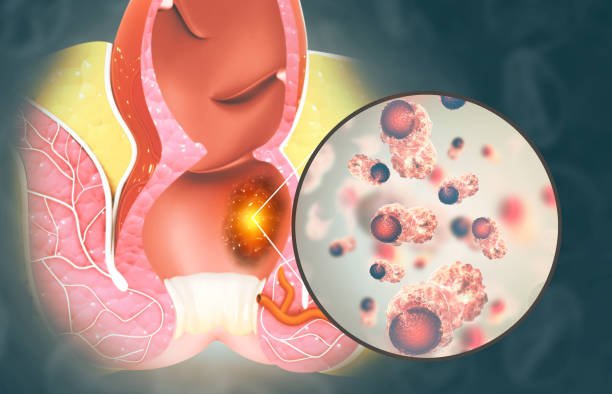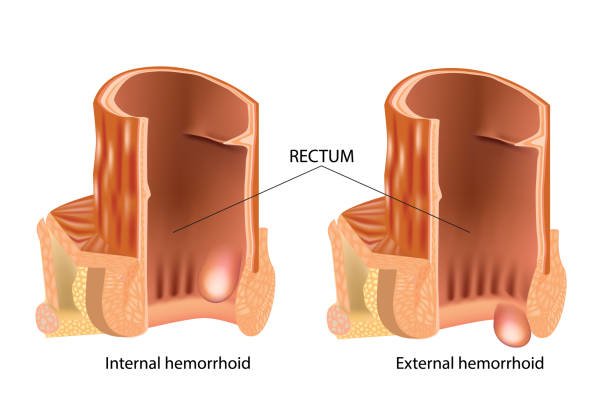Hemorrhoids
Those terrible bulge in and around the anus, what exactly are they? Lets talk about it for a moment.
Yeah they call them haemorrhoid but what are they really and how bad can they become?
lets dive in
Haemorrhoids, also known as pile, are varicose veins or enlarged veins of the anus and rectum. They are a common health problem, particularly in developed countries, affecting almost 5% of the population. There are two types of hemorrhoids, external and internal, which can occur individually or in combination. A person can have only one hemorrhoid or several at a time.
Symptoms/Complications of Hemorrhoids
External hemorrhoids develop under the skin just outside the opening of the anus.They are usually painful when they develop a clot (thrombosis), in which case they appear as very delicate, circular, purplish lumps around the anal opening.
Internal hemorrhoids are often present without causing discomfort or awareness of their existence. This is because there is a rectal lining (mucous membrane) around internal hemorrhoids and not nerve-rich skin. You may feel fullness in your rectum, like you need to have a bowel movement. You may not even know you have them unless you develop clots (thrombosis) or bleed, which causes passing of bright red blood during and/or after a bowel movement.
However, when a hemorrhoid loses its blood supply (strangulated), it can become very painful. Sometimes an internal hemorrhoid pushes or stretches down until it protrudes from the anus (prolapse). This may manifest itself as a pinching sensation in the anal area, or you may notice a painless lump when wiping after a bowel movement.
Additional bumps and tears from hemorrhoids can lead to improper cleaning of the area, leading to anal itching.
Hemorrhoids have a number of predisposing causes, but in most cases, increased abdominal pressure plays a key role. Some of the most common underlying factors in the development of hemorrhoids are constipation and straining to pass stool, repetitive heavy lifting, frequent diarrhea, prolonged sitting or standing, obesity and pregnancy. Excessive abdominal pressure can cause the small veins around the anus and rectum to dilate. When veins lose their elasticity, they fill with blood and are more prone to thrombosis and brittleness. Pregnant women are particularly prone to hemorrhoids, in part because the enlarged uterus sits directly on top of the blood vessels that drain the veins near the rectum and anus. Hemorrhoids affect up to 38% of women in the third trimester of pregnancy.
Diagnosing Hemorrhoids
Your doctor can diagnose hemorrhoids after a physical examination of the anus and rectum. This may include a rectal exam, done with a lubricated, gloved finger or with a small instrument that your doctor can use to take a closer look at your rectum.
Rectal bleeding can be a symptom of other potentially more serious conditions. A source of bleeding can be anal fissures, which are tears in the mucous membrane of the anus that cause painful bowel movements. Some types of inflammatory bowel disease can also cause rectal bleeding, as can tumors of the rectum and colon. If you are passing blood from the anus, you should consult your doctor to determine if further testing is needed.
Treating Hemorrhoids
It is very important to avoid straining when having a bowel movement as this puts extra pressure on the anal area.Treating hemorrhoids usually involves a series of moderate diet and lifestyle changes to ensure soft, formed stools that help avoid pressure on the rectal area.
Dietary Changes
Recommendations for ongoing dietary management include eating balanced meals and snacks and ensuring adequate fiber and fluid intake. Fiber and fluids help soften stool, allowing it to move more quickly and easily through the colon, rectum, and anus, reducing strain.
The goal is to consume 20 to 35 g of fiber per day, spread evenly throughout the day. To monitor your fiber intake, check the nutrient content on packaged food labels.Make gradual changes while increasing your fiber intake, as this approach can help you avoid gas, bloating, and general abdominal discomfort that can occur as your body adjusts to diet changes.
Some commercial fiber supplements are also available. These include bran, psyllium or ispaghula shell derivatives (e.g. Metamucil®) and inulin (Benefibre®), a soluble plant fibre.
Most hemorrhoid sufferers will have good results with the use of a basic fiber supplement; However, if constipation continues to be a problem, products containing the herb senna may provide additional relief. Be sure to check the labels as some of these products contain different substances depending on the form (e.g. powders differ from capsules).Also note that products marked "more" may contain additional undesirable substances that increase their laxative effect.
Resist the urge to scratch
The area around your hemorrhoids may feel itchy. Do not scratch as this could damage the delicate vein walls.
Cleanse Yourself Thoroughly
It is extremely important to properly and thoroughly cleanse yourself after a bowel movement. Only use unscented, undyed toilet paper and try to dampen it under the tap before each cleaning.Some types of toilet paper are softer than others, and some facial tissues contain moisturizer that you may find more comforting. The use of pre-moistened disposable wipes can also increase cleaning comfort.
Taking a Sitz Bath
This is a type of therapeutic bath in which you sit in very warm water with your knees elevated. The warm water will help relieve pain while increasing blood flow to the area. This helps shrink swollen veins and promote healing. Adding Epsom salts to your bath water can also help.
Pushing In
If your hemorrhoid is sticking out of the anal canal, try to gently push it back in.A hemorrhoid that is hanging out of the anus has a higher risk of developing clots or being strangulated.
Hemorrhoids During Pregnancy
To prevent or control hemorrhoids when pregnant, try lying on your left side for about 20 minutes every 4 to 6 hours as this relieves pressure on the main vein that supplies half of the lower body dehydrated.
Ointments and creams
The symptoms of hemorrhoids often disappear within a few days, even without specific treatment. Topical hemorrhoid treatments generally contain one or more active ingredients, including a local anesthetic, mild anti-inflammatory compounds, or astringents.
Local anesthetics temporarily relieve pain, burning, and itching by numbing nerve endings. Analgesic products relieve pain, itching and burning by suppressing nerve pain receptors.
Witch Hazel is a common herbal astringent; When applied to the rectum with a cotton ball, this product can provide relief. Several other products have stronger ingredients that focus on reducing inflammation, and these may require a prescription.
Surgery
If significant hemorrhoid symptoms persist despite conservative measures, a number of minor surgical options are available, many of which can be performed by a doctor in the office. Treatment for internal hemorrhoids includes putting on elastic bands (ligatures), injecting a material (sclerosant) that blocks the vein, staples, cryosurgery, laser or electrocoagulation techniques. Large, persistently prolapsed or strangulated hemorrhoids may require more extensive surgical removal.
Its should be noted that thrombosed external hemorrhoids usually respond quickly to surgical incision and removal of the clot.
Thanks for reading Sayonara ✌️ See you in my next post
Reference/resources
Reference 1
Reference 2
Reference 3
Reference 4
Reference 5
Reference 6
Reference 7
Reference 8


Congratulations @sam9999! You have completed the following achievement on the Hive blockchain and have been rewarded with new badge(s):
Your next target is to reach 300 upvotes.
You can view your badges on your board and compare yourself to others in the Ranking
If you no longer want to receive notifications, reply to this comment with the word
STOPTo support your work, I also upvoted your post!
Support the HiveBuzz project. Vote for our proposal!
This condition is so unpleasant. Even its name is hard to spell! :S
yeah, I totally get that, you can just call it PILE, just in case you forget how to spell it which I myself sometimes forget how to.
yeah, I totally get that, you can just call it PILE, just in case you forget how to spell it which I myself sometimes forget how to.
The real reason for hemorrhoids is usually the sitting posture, see http://www.naturesplatform.com
Some people cause for haemorrhoid is none other than the fact they sit too long a time on toilet seat and still go ahead to sit away from toilet seat.
Thanks for the link
Thanks for your contribution to the STEMsocial community. Feel free to join us on discord to get to know the rest of us!
Please consider delegating to the @stemsocial account (85% of the curation rewards are returned).
You may also include @stemsocial as a beneficiary of the rewards of this post to get a stronger support.
As memtioned in this recent blog by @hillaryisidore, I know this condition way too well....
yeah , it is one of those condition that is no respecter of person, very annoying and unpalatable, capable of destroying self esteem .
sometimes it becomes so bad that people with haemorrhoid become drenched in blood after sitting for too long.
Totally... :(